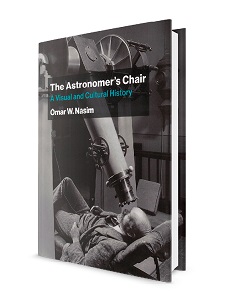These days, the concept of an astronomer’s chair is a strange one; surely it’s just a chair they sit on to work at their computers, isn’t it? However, the cover of this book reminds us that, prior to the invention of the desk-top PC, astronomy was an observation science.
Historically, astronomers had to spend hours glued to the eyepieces of their telescopes and, if they wanted a record of their observations, had to produce a drawing. All this, arguably, required a greater level of comfort than today... in the guise of the astronomer’s chair
Interestingly, this wasn’t immediately apparent to the author, a historian of astronomy, until he noticed “a recurring but previously unrecognized motif: representations of observing chairs specifically designed for use by astronomers at the telescope”. And once he started to notice them, he adds, “I saw them everywhere”.
The book’s subtitle – ‘A Visual and Cultural History’ – cannot fully summarise the content and theme of the book. On one level, it’s a deeply researched and well-illustrated history of observing chairs, but it is also a social document.
In the well-practised method of arts-based research, it “embeds” the images “back into a thick cultural context”, reconstructs a “conventionalized and value-laden perspective” and reveals how the chairs were “positioned within… a particular historical and imperial framework”.
Put more simply, the author investigates what messages the astronomers were trying to send by posing in their observing chairs; what the images said about the cultural place of astronomy and science; and anything else on gender and race issues that he can eke out of the process.
If they can ignore some of the more tortuous prose, students of observational astronomy will find this text both enlightening and endearing in its analysis of what is, let’s face it, a relatively minor aspect of the science. Copious chapter notes and an index will aid further research.
Failing that, one could experience the book at the ‘coffee-table level’ by grazing the images and dipping into the text as the mood takes. This is almost certainly not what the author intended, but the writing style was his choice and some will find his academic language opaque. On the positive side, many of the illustrations will draw the reader into a long-gone and comforting world as far removed from the computer screen as one could wish for.











